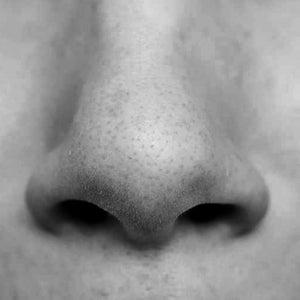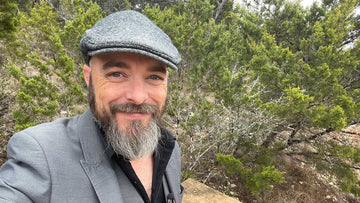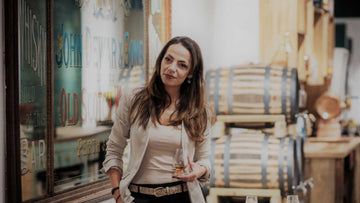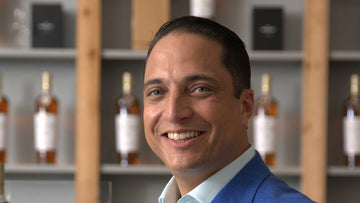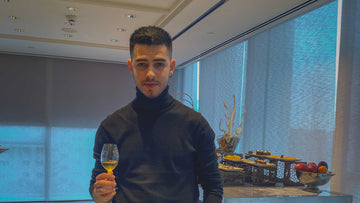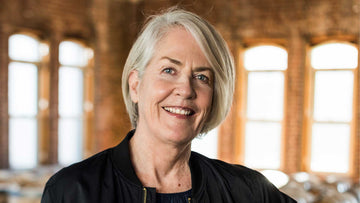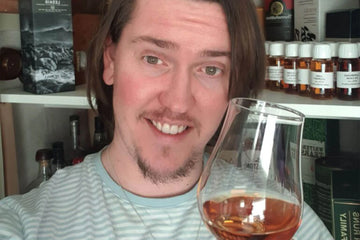Let’s talk about… olfactory fatigue
Aroma sensitivity and the ability to pick out individual scents unidentifiable to the common nose is an ability that most whisky drinkers would love to possess. However, this is a skill learnt through practice and exposure to different types of whiskies on a regular basis. In other words, it is totally achievable.
What is olfactory fatigue?
The common experience of losing sensitivity to odours after continued smelling is known as olfactory fatigue.
The olfactory system, or sense of smell, is simply the part of the sensory system used for smelling (olfaction).
As strong as our olfactory system is, we can’t help but lose some sensitivity to it when confronted with a constant flow of odourant. We naturally adapt to our environment and the continuous odour stimuli can saturate the nose, making our olfactory system appear weaker.
Fortunately, olfactory fatigue is a temporary event which can be dispelled and managed by adopting a few different techniques.
You may see olfactory fatigue referred to as odour fatigue, noseblindness, wearout, sensitivity loss or olfactory adaptation.
Training your nose is a fun and enjoyable exercise which involves nosing whiskies frequently (hurrah), learning to isolate the different odours and identify common aromas connected to certain casks and styles of whiskies.
So, whether you’re at home, in a club tasting or part of a judging panel, here are some practical considerations for safeguarding your olfactory sensitivity when nosing numerous whiskies.
The Elsberg-Levy method
How long does it take for our sensitivity to an odour to begin to lessen? Can we lose a scent entirely with prolonged exposure? Frustratingly, very little research has been done in this area. We must go back to 1935, to Charles Elsberg and Irwin Levy, for the Elsberg-Levy method of odour measurement.
Elsberg and Levy conducted a series of tests using the blast olfactometer (a device which could push air of various volumes and odours into the nose). A short blast of odourant into the nose was followed by a timed wait, the blast was repeated and so on. This initially led to the reduction of odour sensitivity and finally to its complete disappearance.
Findings (same conditions for both):
Citral (lemon odour)
It took 10 blast injections separated by 15 second intervals for the odour to disappear completely. 20 blast injections were required when the interval time increased to 20 seconds. However, when the interval time of 25 seconds or more was implemented, the odour did not disappear even after 30 blast injections.
Coffee odour
It took 10 blast injections separated by 15 second intervals for the odour to disappear completely. However, as soon as the interval was increased to 20 seconds or more, the odour did not disappear.
Some 80+ years after publication, the Elsberg-Levy method remains a popular and recognised way of measuring olfactory threshold. Their study suggests that olfactory fatigue can be negated simply by taking regular breaks between samples.
There are some scientists, however, who believe that using a flow of air in this manner may stimulate an olfactory-like response irrespective of the presence of an odour thus invalidating the results. On this basis, the timings might come under scrutiny. Nevertheless, taking a break between samples remains central when it comes to counteracting olfactory fatigue.
It’s not all about over-exposure though. There are some other key factors to consider when discussing olfactory fatigue in whisky tasting:
Odour potency
Make sure that all your samples have a lid or cover to protect the aroma intensity. We know that odour potency lessens over time, so keep your whiskies covered until the time comes to stick your nose in the glass.
Dilution level
Make sure that all your samples are diluted to the same strength. It’s generally recognised that whiskies diluted to 20-25% ABV impart the best flavour for sensory evaluation purposes.
Boredom
Make sure that the first and last sample (and all those in between) are confronted with the same amount of enthusiasm. Although nosing 30+ whiskies may sound like the perfect way to spend an evening, the potential for boredom must be considered! You can maintain motivation by taking regular breaks and making the tasting conditions as comfortable and positive as possible.
What about coffee beans?
It’s long been thought that smelling coffee beans calibrated your olfactory palate. However, according to the 2011 experiment conducted by Dr Alexis Grosofsky, this is not the case.
Her experiment exposed subjects to three different high-street fragrances. They then smelled either fresh air, coffee beans or slices of lemon. After this, they were given the same three fragrances plus one new one and they had to identify which fragrance was the new one.
Findings:
The group of subjects that smelled fresh air or slices of lemon had a near identical success rate to those who smelled coffee beans, suggesting that coffee beans had no beneficial role in avoiding olfactory fatigue.
One final piece of advice to avoid olfactory fatigue… smell yourself!
It’s widely acknowledged that smelling your own skin (not perfumed and normally at the bend of your elbow), is one of the most effective ways to reset your olfactory system. Due to continuous exposure, your olfactory sensitivity to the odour of your skin is greatly decreased which provides the perfect baseline against which other olfactory odours must compete. Try it.

